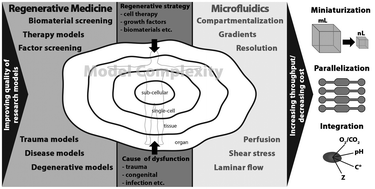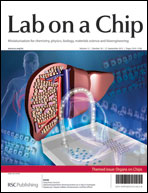Regeneration-on-a-chip? The perspectives on use of microfluidics in regenerative medicine
Abstract
The aim of regenerative medicine is to restore or establish normal function of damaged tissues or organs. Tremendous efforts are placed into development of novel regenerative strategies, involving (stem) cells, soluble factors, biomaterials or combinations thereof, as a result of the growing need caused by continuous population aging. To satisfy this need, fast and reliable assessment of (biological) performance is sought, not only to select the potentially interesting candidates, but also to rule out poor ones at an early stage of development. Microfluidics may provide a new avenue to accelerate research and development in the field of regenerative medicine as it has proven its maturity for the realization of high-throughput screening platforms. In addition, microfluidic systems offer other advantages such as the possibility to create in vivo-like microenvironments. Besides the complexity of organs or tissues that need to be regenerated, regenerative medicine brings additional challenges of complex regeneration processes and strategies. The question therefore arises whether so much complexity can be integrated into microfluidic systems without compromising reliability and throughput of assays. With this review, we aim to investigate whether microfluidics can become widely applied in regenerative medicine research and/or strategies.

- This article is part of the themed collection: Organs on a Chip 2013

 Please wait while we load your content...
Please wait while we load your content...